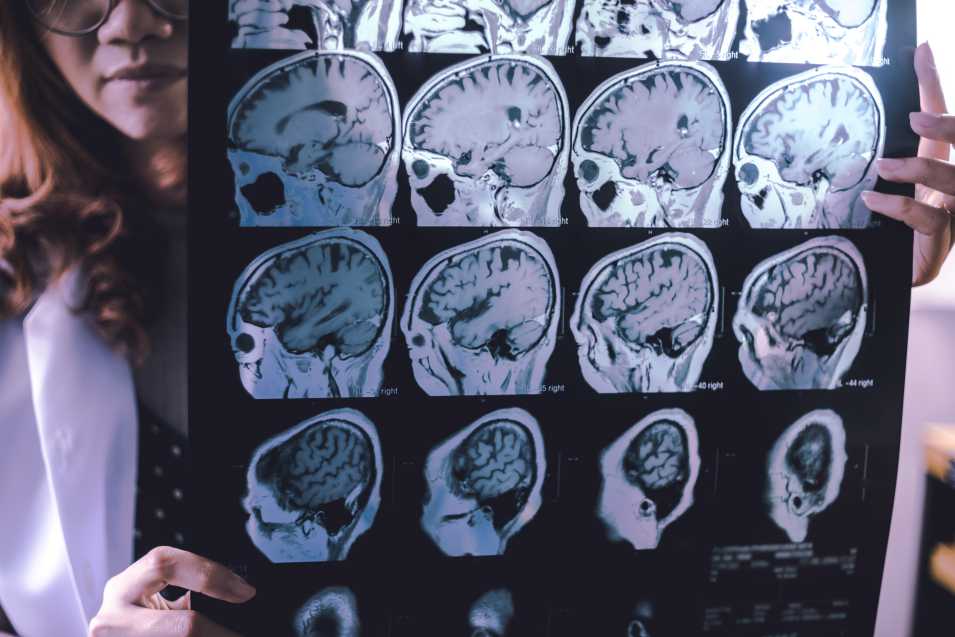Frontotemporal Dementia Eyes; Frontotemporal Dementia is a type of dementia known to negatively affect the eyes. FTD is often misdiagnosed as Alzheimer’s disease or a psychiatric disorder, but it is a different condition with its symptoms and challenges.
One of the lesser-known aspects of FTD is its connection to eyesight. This article explores the link between FTD and vision, including symptoms, diagnosis, treatment, and coping strategies.
What is Frontotemporal Dementia (FTD)?
Frontotemporal Dementia is a progressive neurological disorder that affects an estimated 50,000 to 60,000 people in the United States. It typically strikes people in their 50s or 60s, although it can occur in younger or older individuals. Frontal and temporal lobe nerve cell loss causes FTD. This causes the loss of brain tissue and cavities in the eyes.
There are three main types of FTD:
- Behavioral variant FTD (bvFTD)
- Semantic variant primary progressive aphasia (svPPA)
- Non-fluent variant primary progressive aphasia (nfvPPA)
Each type has its own symptoms and challenges, but all involve a decline in executive function, social behavior, and language skills.
The Connection Between FTD and Eyesight
Recent research has shown that there is a link between Frontotemporal Dementia and eyesight. FTD can damage the brain’s visual processing areas, altering vision and perception. This can include:
- Difficulty recognizing faces or objects
- Problems with depth perception or spatial awareness
- Changes in color perception or sensitivity to light
- Hallucinations or visual illusions
In addition to these visual symptoms, FTD can also affect eye movements and coordination, leading to problems with reading, driving, and other activities requiring visual attention.

How Vision Changes in FTD Patients?
The changes in vision and perception in FTD patients can be subtle at first, but they can become more pronounced as the disease progresses. Some common changes in vision that may be observed in Frontotemporal Dementia patients include:
- Difficulty recognizing familiar faces or objects, such as family members, friends, or household items
- Problems with depth perception or spatial awareness, such as difficulty judging distances or navigating through familiar environments
- Changes in color perception or sensitivity to light, such as a loss of color contrast or increased sensitivity to bright lights
- Hallucinations or visual illusions, such as seeing patterns or shapes that are not there
These changes in vision can profoundly impact a person’s ability to communicate, navigate, and perform daily activities.
Diagnosing FTD and Eye Problems
Diagnosing frontotemporal dementia can be challenging, as the symptoms can be similar to other neurological or psychiatric conditions. A thorough medical evaluation, including neurological and psychiatric assessments, is necessary to rule out other conditions and determine the cause of the symptoms.
In addition to a medical evaluation, eye exams, and vision tests may also be useful in diagnosing FTD and related eye problems. This can include visual acuity tests, color vision tests, and tests of eye movements and coordination. These tests can help identify visual changes associated with FTD and differentiate them from other eye conditions.
Treating Frontotemporal Dementia Eyes
FTD has no cure, thus treatment focuses on symptom management and quality of life. This can involve a combination of medications, behavioral therapies, and supportive care.
In treating eye problems associated with FTD, several options are available. These can include:
- Corrective lenses or glasses to improve visual acuity
- Environmental modifications to improve lighting or reduce visual clutter
- Assistive devices, such as magnifying glasses or talking clocks, to aid with reading and other activities
- Occupational therapy to help with daily activities and improve visual skills
- Counseling or psychotherapy to address emotional and behavioral issues related to vision loss
Related Article: 7 Stage of Lewy Body Dementia
Coping with FTD and Vision Loss
Coping with FTD and vision loss can be challenging for patients and caregivers. Developing coping strategies and seeking support from medical professionals, social workers, and support groups is important.
Some strategies that may be helpful for coping with frontotemporal dementia and vision loss include:
- Modifying the home environment to reduce visual clutter and improve lighting
- Using assistive devices, such as magnifying glasses or talking clocks, to aid with reading and other activities
- Developing a routine and daily schedule to help with memory and organization
- Engaging in activities that are enjoyable and stimulating, such as music, art, or exercise
- Support from family, friends, and support groups reduces loneliness and depression.
Support and Resources for FTD Patients and Caregivers
Many resources are available for FTD patients and caregivers, including support groups, educational programs, and advocacy organizations. These resources can help you manage FTD and eye issues.
Some resources that may be helpful for FTD patients and caregivers include:
- The Association for Frontotemporal Degeneration (AFTD)
- The Alzheimer’s Association
- The National Institute on Aging (NIA)
- The Family Caregiver Alliance
- Local support groups and community organizations
Understanding the link between Frontotemporal Degeneration and eyesight is important in managing this complex and challenging condition. FTD patients and caregivers can improve their quality of life and keep independence as long as possible by detecting symptoms, getting accurate diagnosis and treatment, and creating coping skills.
Related Article: Hospice Criteria for Dementia
